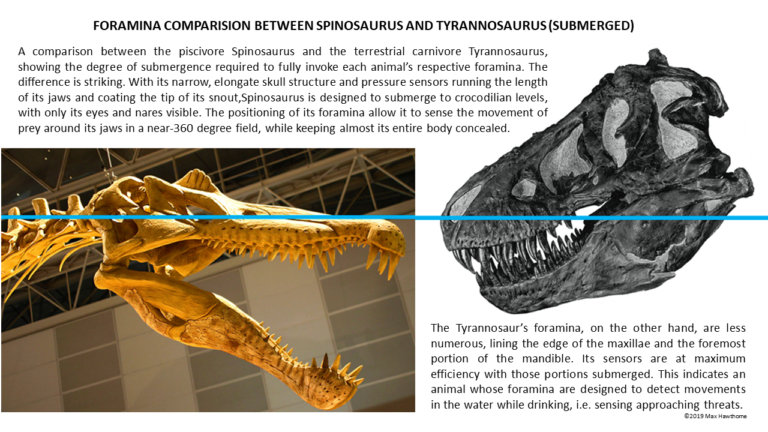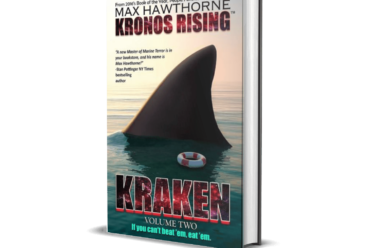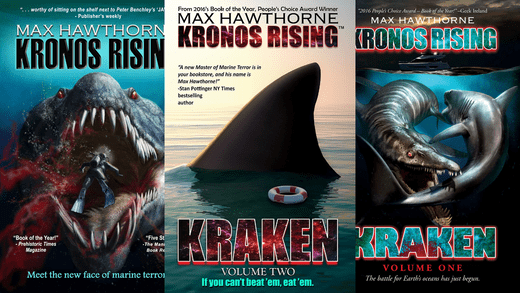Despite paleontologists’ claims that Tyrannosaurus rex, history’s mightiest terrestrial predator, was a sensitive lover, it appears that the foramina on its face were there for a different reason – for protection. There was something that may have actually eaten T-rex. But what was it?
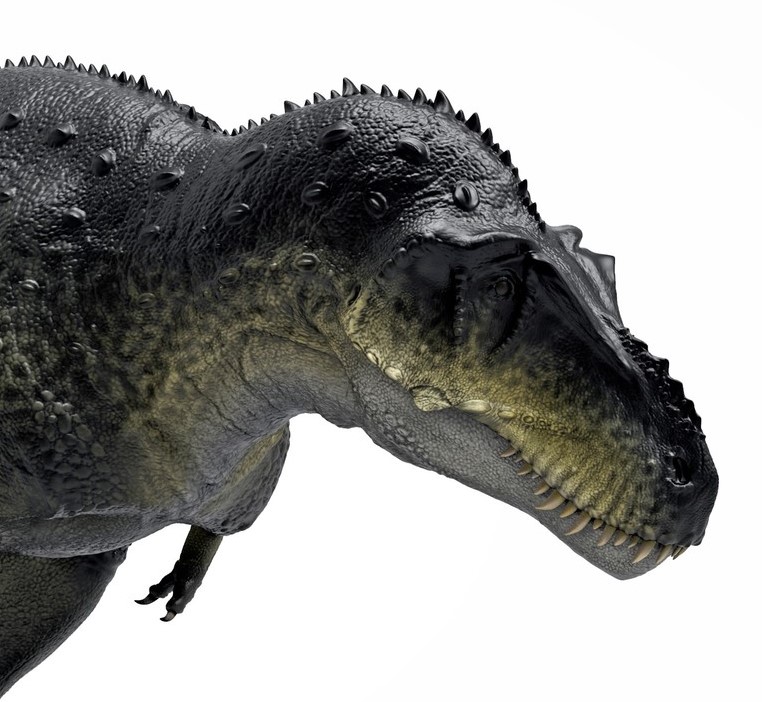
If you follow trends in paleontology like I do, you’ve probably seen at least one post from paleontologists, touting their theory that Tyrannosaurus rex was a sensitive lover. Yes, you heard that right. It was a sensitive lover. I believe even the phrase, “enjoyed foreplay” has been tossed around. (no, this is not a campaign for an adult film, starring “Rex Randy”) The theory is a real one and is, from what I’ve gleaned, based on a study of Daspletosaurus, a progenitor to Tyrannosaurus rex. https://www.nature.com/articles/srep44942 It evaluated the foramina (sensory pits) found on the dinosaur’s muzzle (maxillae/mandible) and concluded that the tissues on a Tyrannosaur’s face, and its snout, in particular, were as sensitive as a crocodilian’s. This has led some to suggest that the animals engaged in romantic mating behavior, rubbing their faces together before, during, and perhaps even after mating. https://roaring.earth/t-rex-sensitive-lover/?fbclid=IwAR0HjRN3a-fKXeEU-9HdyelMFKTHoXNy0oF3pWbB4yb4wPWG4Z-bsAU-oI8
For the record, I’m not here to rain on anyone’s parade. Sure, it’s possible that T.rex was a sensitive lover, and perhaps theropods in general, for that matter, were. They my well have engaged in mating behavior that involved some sort of foreplay. Heck, crocodiles do it, so why not T.rex?
Let’s face facts,
If you were an amorous male whose mate or prospective mate was as big as you, and who was armed with the deadliest bite of any known terrestrial carnivore, you’d probably want to be “warm things up a bit” too, before trying to score. Then again, for all we know theropod mating might have been like that of today’s big cats, with the male seizing the female by the nape to establish dominance and immobilize her. Given the potential awkwardness of two eight-ton bipedal titans copulating (the sheer size, balance, their tails getting in the way, etc.), I’m sure a still target would increase the male’s chances of success.
Regardless, and as paleontologist Mark Smith once pointed out to me, the simplest explanation in most situations usually is the correct one. I believe that applies here as well. If the mating behavior of theropods was on the sensitive side, they were probably taking advantage of, and relishing, sensory systems that they had evolved for an entirely different reason. But, if so, what was that reason? If their sensory pits didn’t evolve to turn them into the Seducers of the Santonian (yes, I coined that term), then why did Tyrannosaurs have them – and both genders, by the way. If Tyrannosaurus rex was not a sensitive lover (no offense, Rex), why did it have these sensors? My theory, and I think it’s solid, is that the foramina where there to help protect T-rex from other predators. What predators, you ask? What on earth could kill and eat a Tyrannosaur?
THE CREATURE THAT SCARED T-REX
Why, a crocodile, of course. Yes, there were crocodiles that ate tyrannosaurs.
T-rex, and every other theropod that’s ever existed needed something no living creature can do without: water. They had to go to a nearby pond, lake, or river, lower their muzzle, and drink. There was no escaping it. And when they did do this they were at their most vulnerable to the rulers of those bodies of water, including creatures like Deinosuchus.
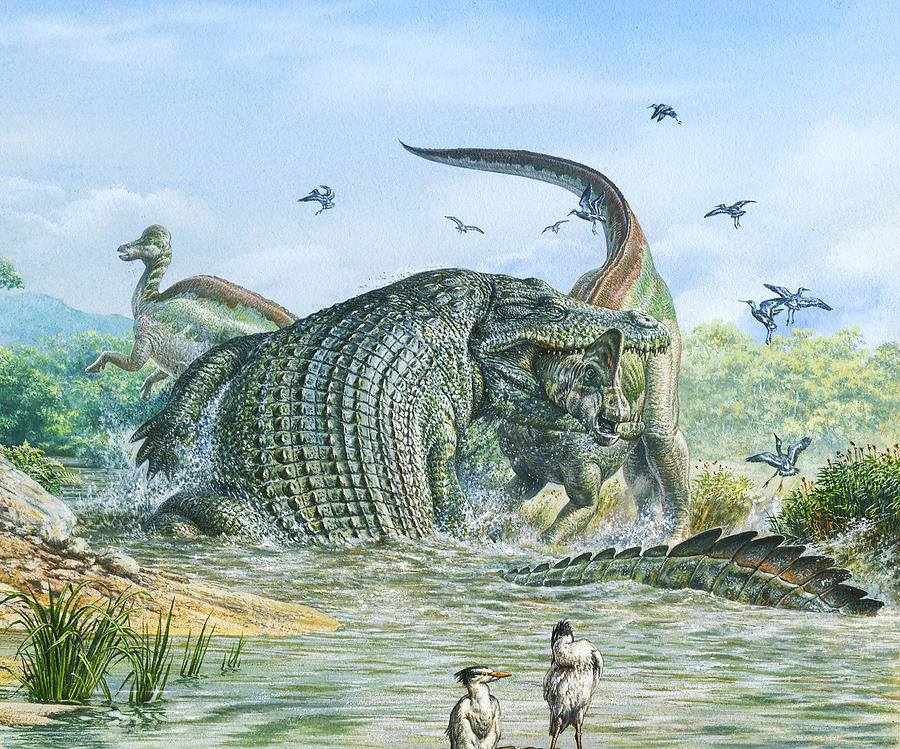
How T-rex Drank Water
Before we get into the science aspect, let’s examine how T-rex most likely drank. I believe the Cassowary is the best example we have to compare it to today. I’ve studied footage of ostriches drinking and their technique is similar, except that there is excessive head raising in order to get the water to flow down that long neck. (If anything, an ostrich would be a good comparison for a sauropod in terms of drinking – write that down).
Let’s look at this video of a Cassowary imbibing. This is probably similar to what a large theropod did: remaining upright, possibly wading into the water a bit, lowered its head down, then lifted it back to the horizontal to ingest. Note that the bird remains alert the entire time.
Why T rex Couldn’t Fight back?
Of course, while doing this a Tyrannosaur, or any animal small enough to fall on the menu, was a potential target for a big, hungry crocodylomorph. And let’s not kid ourselves and say, “Oh, no crocodile, even Deinosuchus, could take down a T-rex.” Pushing or maybe even exceeding forty feet, the “dread crocodile” was as large as the largest of Tyrannosaurs, with jaws that were potentially even more powerful. And, let’s not forget, crocodiles often travel in loose “gangs”. Once a prey item is pulled off balance and into the water, it’s a feeding frenzy that no Tyrannosaurus could survive.
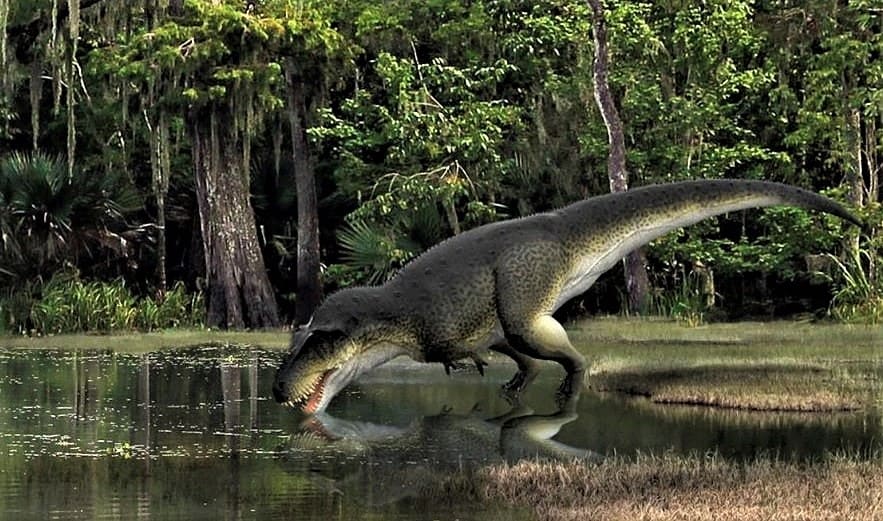
EVIDENCE
Let’s move on to questions like, “Do we have any evidence to back this up?”, “What research has been done to confirm this theory?”, or “Why isn’t there a formal paper on this?” As soon as I put together a team of respected paleontologists that share my vision, I will happily address that last one. I did that with my theory on plesiosaur locomotion (Hawthorne et al 2019), and I will do it for this one as well. And to any unscrupulous individuals who might think that this is an idea worth stealing (or being “inspired by”), let me remind you, paraphrasing plagiarism is still plagiarism. Moving right along . . .
First, let’s consider crocodilian sensory pits: underwater pressure sensors which are so sensitive that, even in complete darkness, tested alligators have been shown to turn their heads in response to ripples created by a single drop of water.
We also see these foramina in extinct predatory marine reptiles like pliosaurs. The pressure sensors line portions of the head, particularly the jaws. They were undoubtedly used to find prey in murky/sub-light conditions, at night, or even in the darkness of the ocean abysses (Foffa et al, 2014 Complex rostral neurovascular system in a giant pliosaur)
Strangely, tyrannosaurs had foramina similar to those of crocodiles and pliosaurs – sensory pits that sense pressure waves. And where did these foramina work? In the water. That’s right; they have to be submerged in order to work. So, why would a tyrannosaur need these? Well, it helps to think of the dinosaur as a submarine with sonar, scanning for incoming threats. A scared T-rex was an alert T-rex. Tyrannosaurs knew that the water often contained dangers, and when they lowered their heads to take a drink their senses were straining to detect any kind of disturbance in the water around them. The tiniest displacement could indicate a pending attack from a croc of some kind and give them a split-second to rear back and save themselves.
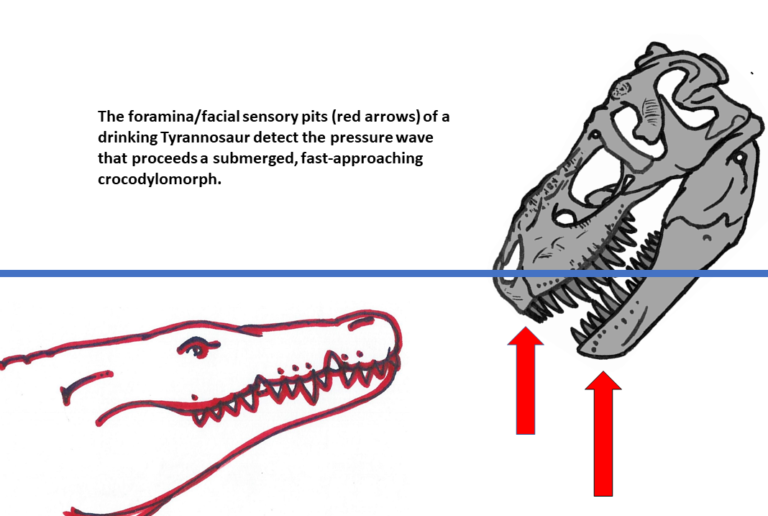
For those of you that may harbor doubts about the foramina on Tyrannosaurs being adept at sensing objects in the water, let’s look at the theropod king of facial sensors: Spinosaurus. As this 2005 study showed, Spinosaurus had pressure sensors similar to that of crocodiles and could hunt in complete darkness. Its foramina allowed it to sense movement in the water, even if it couldn’t see. This would have been an invaluable tool for a cautious T Rex, which was regularly forced to dip its face into murky water, not knowing what might be waiting.
Interestingly, this type of pressure sensing it not unique to Tyrannosaurs. In fact, it goes all the way back to the late Triassic, 231.4 mya, when theropods first appeared. If you look closely at its skull, you can see that even Coelophysis was starting to develop them.
Back then, fledgling dinosaurs faced the same threats that T-rex would one day. No, there weren’t crocodiles during the Triassic, but there were the next best things: those miracles of convergent evolution known as phytosaurs. Phytosaurs were large, carnivorous, archosauriform semi-aquatic reptiles that had a nearly global distribution. They were very similar to crocodiles, and had similar feeding habits.
Behemoths like the monstrous Smilosuchus, estimated at 7-12 meters, and with serrated fangs to boot, would have been a nightmare for any dinosaur of its time. https://en.wikipedia.org/wiki/Smilosuchus
The Phytosaurs lasted until the end of the Triassic, with some fossils found in Early Jurassic strata, suggesting their range may have extended beyond the Triassic-Jurassic boundary. Of course, following the phytosaurs came a variety of crocodylomorphs, eventually including the aforementioned Deinosuchus, as well as titans like Sarcosuchus imperator, which probably posed a threat to the contemporaneous Carcharodontosaurus. Putting it bluntly, there were always threats in the water, something huge and hungry, waiting to lunge out and make a meal of the unwary. It makes perfect “sense” (pun intended) that landbound theropods evolved defensive mechanisms such as facial foramina to help them survive. https://en.wikipedia.org/wiki/Crocodylomorpha
In an effort to be all-inclusive, I should point out that these pressure sensitive foramina/pits were present on most, if not all theropods, and support my position that the animals evolved them to counter the omnipresent threats they faced. If you look at the skulls of these assorted meat-eaters, starting with Tyrannosaurus rex, of course, you will see that, older or younger, small, medium, or giant, they all have them.
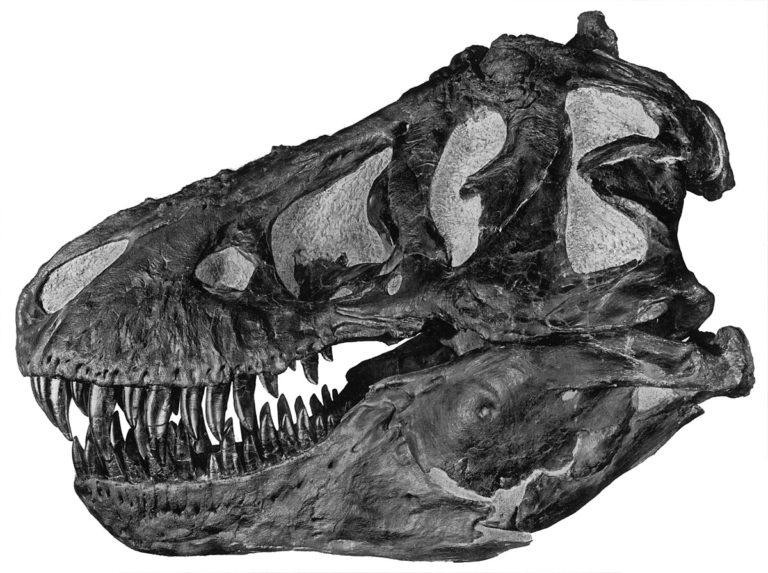
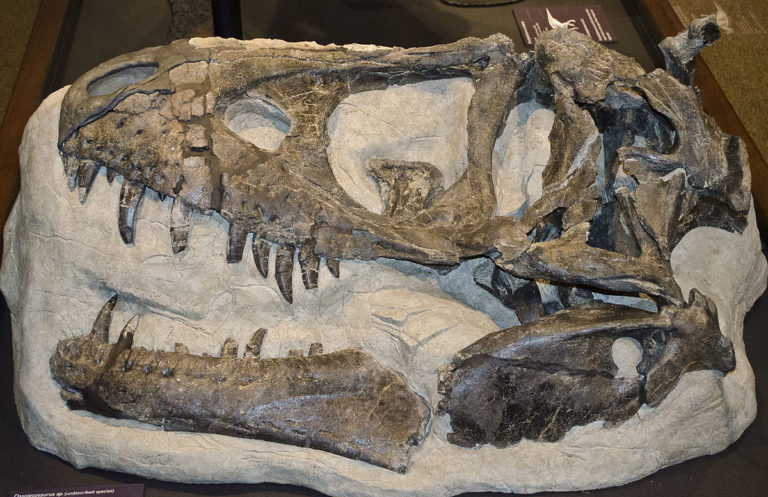
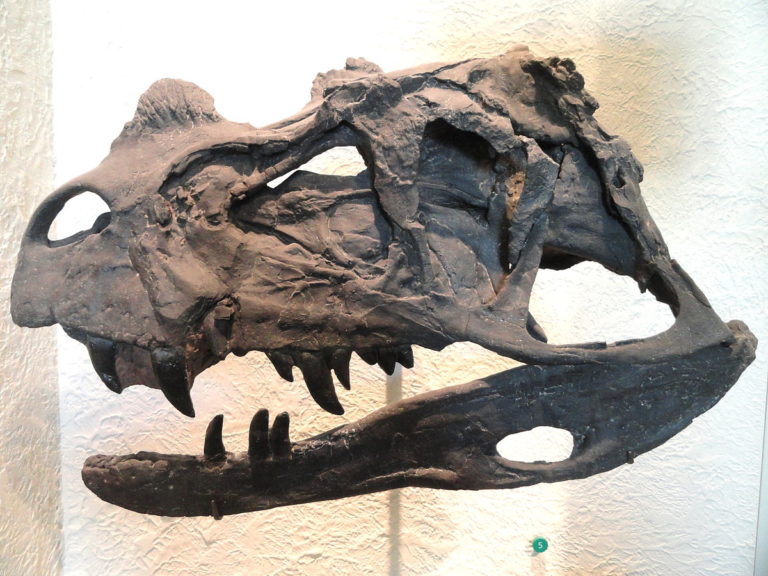
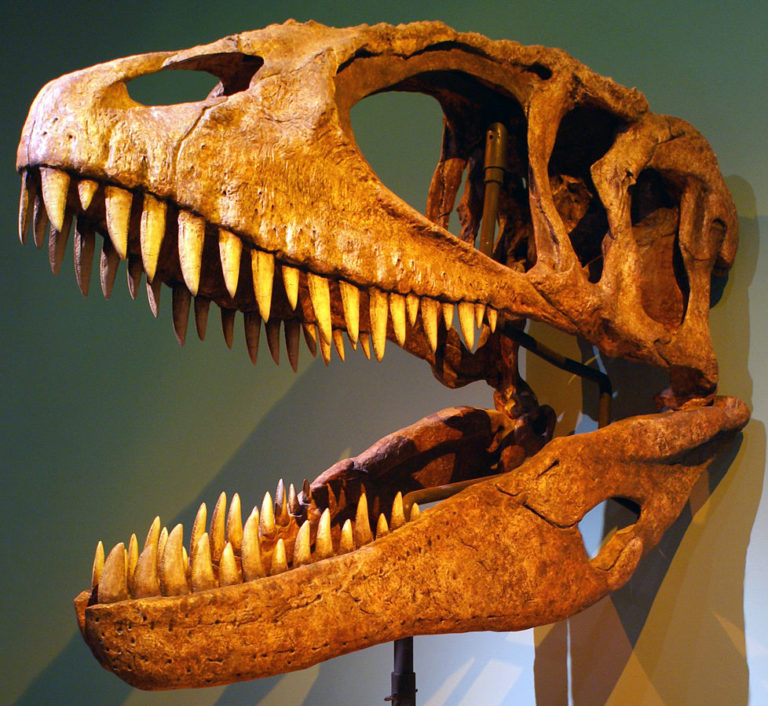
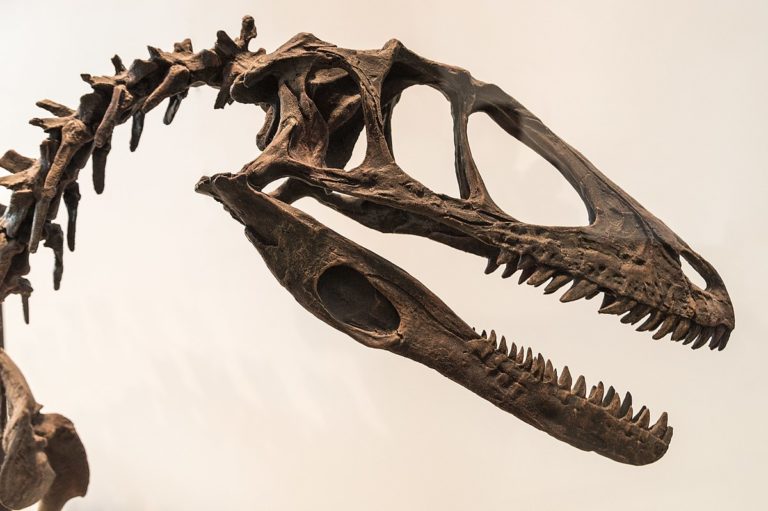
Even exceptionally early theropods like the coelophysid dinosaur Syntarsus kayentakatae (200-196mya) or Coelophysis itself (221.5-196mya) possessed rudimentary facial pits that strongly suggest the presence of foramina. Phytosaurs are confirmed to have survived at least until Triassic Extinction Event (200mya), and possibly beyond. Their presence, as mentioned, would have proven an ongoing threat for any thirsty theropod.

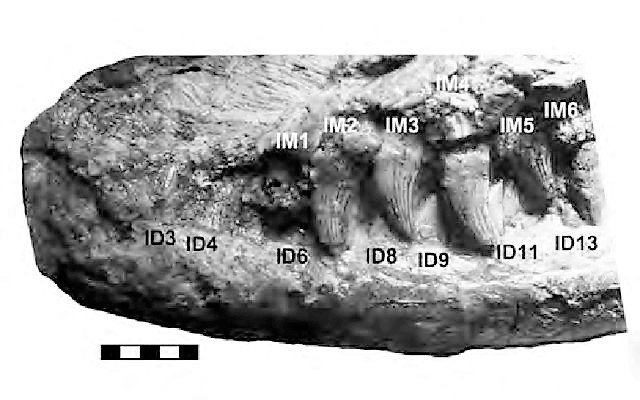
Update: a land-based, fish-eating dinosaur with foramina?
The Early Jurassic theropod Dilophosaurus – an approximately 23-foot, 800-pound carnivore, also possessed facial foramina. There are some that feel that its rosette of interlocking teeth (Milner, Kirkland, 2007) indicated it was a piscivore – a fish-eater. I agree with their findings: Dilophosaurus shared many characteristics with Spinosaurus, including long, slender jaws, long, elasmosaur-like teeth, and nasal openings retracted back on the head, strongly suggest this. I would add to this that the crest may have served to strengthen the weak spot otherwise caused by the subnarial gap, enabling the jaws to handle the load and thrashing of large fish. And, I would point out that the forelimbs of Dilophosaurus possessed the same enlarged single claw found in the spinosaurids Spinosaurus and Suchomimus. As I discussed in a more recent blog post, I believe spinosauruds used their forelimbs for self-defense against other large theropods, as opposed to risking their more fragile maxilla and mandible in a direct, “jaw to jaw” confrontation. As the illustration of Dilophosaurus below shows, it had well-developed facial foramina. The positioning of these pressure sensors, particularly around the subnarial gap, does not, IMHO, suggest “nutrient foramina” as some have theorized that supported “lips” – nor do the foramina-lined, crocodile-like jaws of Spinosaurus – but rather organized sensors used in the water. In this case, the foramina did double duty, detecting both approaching fish and potential threats.
But what kind of crocodile could pose a threat to T-rex?
As naysayers will be quick to point out, the known species of Deinosuchus are not proven to exist past 77 mya, which is before the emergence of Tyrannosaurus rex. Yes, the “terrible crocodile” most certainly made the lives of earlier tyrannosaurs like Albertosaurus much more interesting, but it wasn’t around to prey on T-rex itself. Or was it?
It is possible that the 39-foot Deinosuchus was still around during the Maastrichtian, and that we simply haven’t found proof yet. I have a large section of crocodile skull in my collection that came from the Hell Creek formation of South Dakota and may well have come from a “smallish” (8-meter est.) Deinosuchus. Consider Livyatan melvillei, the raptorial sperm whale. When discovered, it was announced that the whale only lived from 10-11 mya. But then, lo and behold, a tooth was discovered in Australia that pushed that timeline to as recently as 5 mya. Did it live past that point? We simply don’t know, but I suspect it may well have. The same thing may apply to Deinosuchus, and even if it doesn’t, we know there were large crocodiles that existed at the end of the Cretaceous and beyond – hence the species we have today.
In his book, King of the Crocodylians, David R. Schwimmer stated that he had heard from professional sources that “Deinosuchus remains are especially well known in the upper most Cretaceous (Maastrichtian) formations in New Jersey and Delaware. Most of these verbal reports are based on discoveries of very large vertebrae of the advanced crocodylian type termed ‘procoelous’, which is characteristic of Deinosuchus and all eusuchian crocodylians.” He deduced, however, that these reported findings were, in actuality, a species known as Thoracosaurus neocesariensis – a crocodile that survived from the Campanian Age into the early Tertiary. He also said, “I was especially impressed to discover the size this common species could reach when I observed a skull . . . at the New Jersey State Museum in Trenton. The skull was at least a meter long and fairly massive, suggesting that the crocodylian was approximately 7.0-8-0 m long and may have weighed 2.0 tons.”
Just for comparison, the captured saltwater crocodile Lolong was 20.3 feet long (6.17 meters) and weighed over a ton. His skull was .7 meters long. The late Cretaceous croc was possibly 26 feet long and weighed around 2.2 short tons. That’s not big enough to drag down a full-grown Rex, at least not alone, but it’s certainly massive enough to drown and devour the young and sub-adults. We also don’t know if the species got bigger than that, or what other, yet-to-be-discovered croc species existed. Oh, and another potentially interesting point: if you research the skeletons of Tyrannosaurus rex that have been discovered, the majority of them were found in what was, back in the Cretaceous, riverine environments. They’re also incomplete (missing parts). Is that all just a coincidence? Who’s to say?
The only thing we do know is that, unless you were an Alamosaurus or the like, when you stepped into a Cretaceous river, you rolled the dice.
An Interesting Parallel between a few of our Extant Predators
Let’s draw a parallel between a few of our extant predators, ones that share relationships with extant crocodilians similar to what T-rex had with the primeval crocs of its day. I’m referring, of course, to today’s lions and tigers, and the crocodiles they are forced to deal with.
When we consider the African lion and Bengal tiger, we’re looking at apex predators – big cats that can weigh in excess of 500 lbs.. On land, they are fearsome – agile, fast, and powerful. But once pulled off their feet and dragged into the water, they are vulnerable. Nile crocs can and do kill lions, and even a tiger can be killed by crocodiles: https://www.telegraph.co.uk/news/worldnews/asia/india/8695915/Fifteen-foot-Bengali-crocodile-claims-king-of-jungle-title-from-tiger.html
Crocodile attacks on big cats are surprisingly common, yet the cat often manages to escape. How? They lap up water, thus they don’t stick their snouts in like a theropod would, so how do they know danger is coming? The answer is that they have a sensory system of their own that is similar in function to the foramina of extinct theropods: their whiskers.
A cat’s whiskers can perform amazing feats, including gauging the distance of objects and sensing changes in vibration and movement in the air. Thus, they can sense the air above the surface of a body of water being disturbed as a large body moves under it and, if their whiskers are dipped in the water, they can sense the water itself being pushed as a predator moves to attack. https://www.livescience.com/44196-why-do-cats-have-whiskers.html
If we look at these images of big cats drinking, it gives a good idea as to how their senses and sensors are constantly straining, trying to anticipate danger in the water they must drink in order to survive.
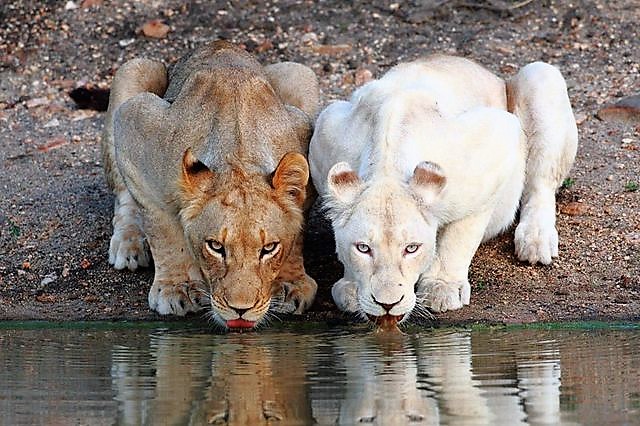

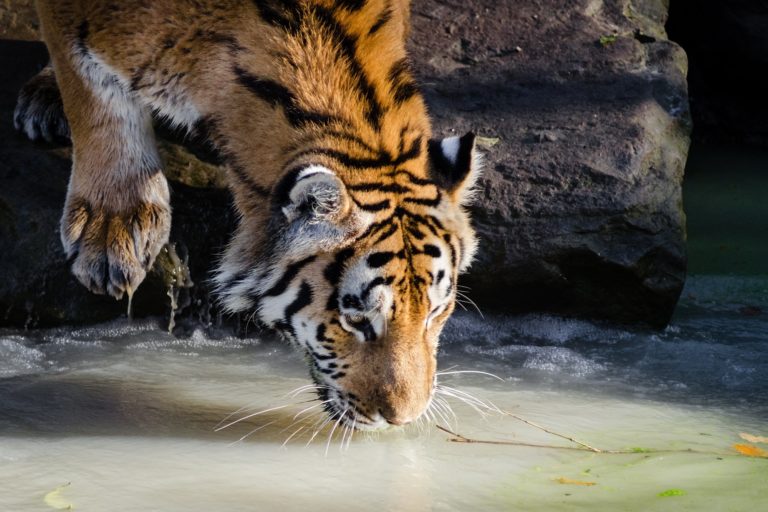

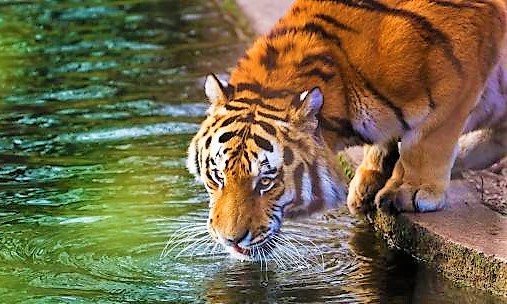
Again, in the tiger we see whiskers longer than those of the African lion making contact with the water. Given that tigers are solitary hunters vs the lion living in prides, I believe that the lion’s numbers while communally drinking, i.e. additional sets of eyes and ears, requires less sensitive whiskers. The lone tiger needs better sensors to detect approaching crocodiles.
Last, but certainly not least, let’s consider terrestrial herbivores from the Mesozoic. It seems like the presence of well-developed foramina takes place primarily in carnivorous theropods, but is largely absent in herbivores. This would make sense, as herbivores tend to outnumber carnivores by a huge margin and rely more on a numbers game to survive. Consider herds of wildebeest that cross rivers in Africa. They just wade across en masse, with the unlucky ones dragged to their deaths by gorging Nile crocodiles. The loss of a few or even a few dozen members of the herd don’t matter; there are hundreds or even thousands to take their place. Predators do not have such luxuries, not then, not now. So when a family group of tyrannosaurs (or allosaurs, raptors, etc) arrived at the edge of a river to drink, you can bet they were on high alert and bracing themselves for the inevitable.
Summary
In summation, although it’s not impossible that Tyrannosaurs were sensitive or even romantic lovers, AKA the “Cads of the Campanian” (another Max Hawthorne original), both Occam’s razor and a mountain of evolutionary evidence indicate that the primary reason for their pressure sensitive pits was to keep them from becoming what they viewed everything else as – a meal.
Even the hunter can become the hunted.
Thanks for stopping by and I hope you enjoyed my theory. If you haven’t checked out my novel, Kronos Rising: Kraken (vol. 2) which includes my first foray into bringing an “extinct” theropod to life, be sure and check it out. It’s book 5 in the series and a high-octane roller coaster ride from start to finish. https://www.amazon.com/gp/product/B07DJZ84VH/ref=series_rw_dp_sw
Best,
Max Hawthorne, author
